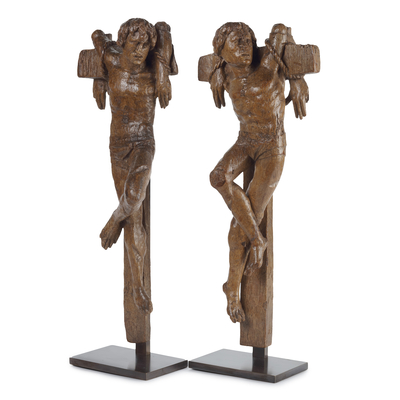Collector's cabinet, attributed to Ulrich Baumgartner
Global shipping available
- Origin
- Augsburg
- Period
- Ca. 1625
- Material
- Pinewood, oak, ebony, glued and inlaid with engraved ivory, Brass, iron
- Signature
- Augsburg city mark and 'eben'
- Height
- 24 cm
- Width
- 18.5 cm
- Depth
- 30.5 cm
- Literature
O. Impey, A. MacGregor, ‘The Origins of Museums: The Cabinet of Curiosities in Sixteenth- and Seventeenth-Century Europe (1985), in: S. Staniforth (ed.), Historical Perspectives on Preventive Conservation, Los Angeles 2013, pp. 78-82.
G. Laue (ed.), Möbel für die Kunstkammern Europas, München 2008, pp. 76 - 80, 204 - 206, cat. no. 3.- Museums
See for objects attributed to Ulrich Baumgartner:
- Kunstgewerbemuseum, Berlin, inv. no. P 77
- Herzog Anton Ulrich-Museum, Braunschweig, inv. no. Moe 85
- Nationalmuseum, Stockholm (Kreisel 1968, no. 386)
- Museum für Kunst und Gewerbe, Hamburg, inv. no. 1877.462
Questions about this object?
Please use one of the contact options below:
Description
This sophisticated decorated cabinet, made in Augsburg, is made of a conifer and oak body, with ebony and padauk veneer and intarsia of engraved and blackened ivory. On the lid is the Augsburg city mark of a pinecone and on the front is the word ‘eben’. The marks show that the cabinet was made after 1625 in an Augsburg casketworkshop. Based on the elaborate ivory intarsia engravings and style of the cabinet, it can be attributed to Ulrich Baumgartner (ca. 1580 - 1652). Baumgartner was a specialised cabinetmaker that worked in Augsburg, in collaboration with among others Augsburg art dealer and court correspondent Philipp Hainhofer. The cabinets with ivory intarsia were a speciality of the Augsburg cabinetmakers and craftsmen at the start of the 17th century.
The outside of the cabinet is elegantly decorated with geometric star-shaped patterns of glued ebony and padauk accentuated with small tin bands. The real beauty of the casket reveals itself when opened, the door panels and the eight drawers are decorated with refined ivory panels, engraved and inlaid with figurative motifs, scrollwork, mythical animals and winged creatures. The borders of the drawers are decorated with a ripple pattern that catches the light beautifully. There is a secret compartment in the back of the central drawer, hidden for curious eyes.
Cabinets like this were made for the storage and display of art and curiosities. The owner of the cabinet thus showed his wealth and knowledge of the world. The collections of objects in a cabinet of curiosity could be divided into artificialia (man-made works of art and antiques), naturalia (natural objects such as shells and stones), exotica (exotic animals and plants), and scientifica (scientific instruments). Over time, these cabinets grew into "kunst- und wunderkammers", physical spaces in which art and curiosities were exhibited. These rooms filled with private collections were the precursors of the first museums.








